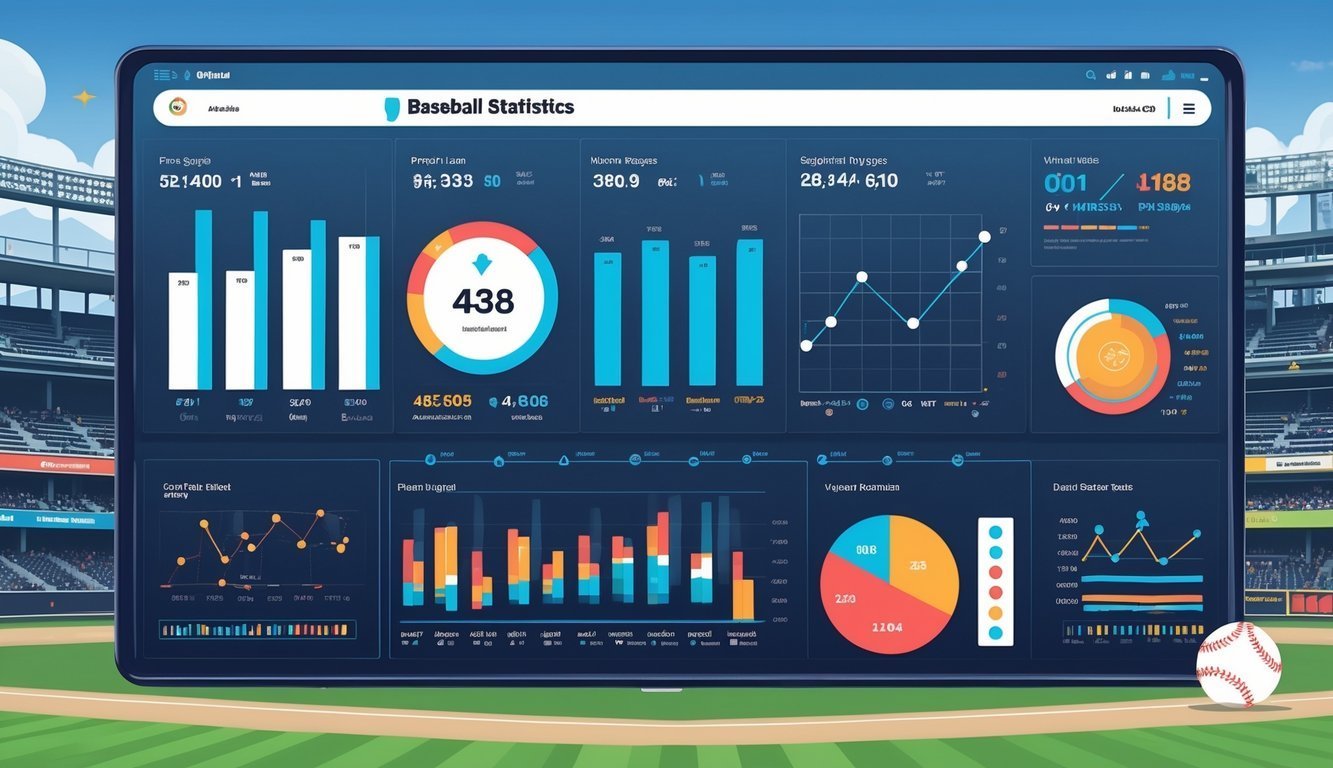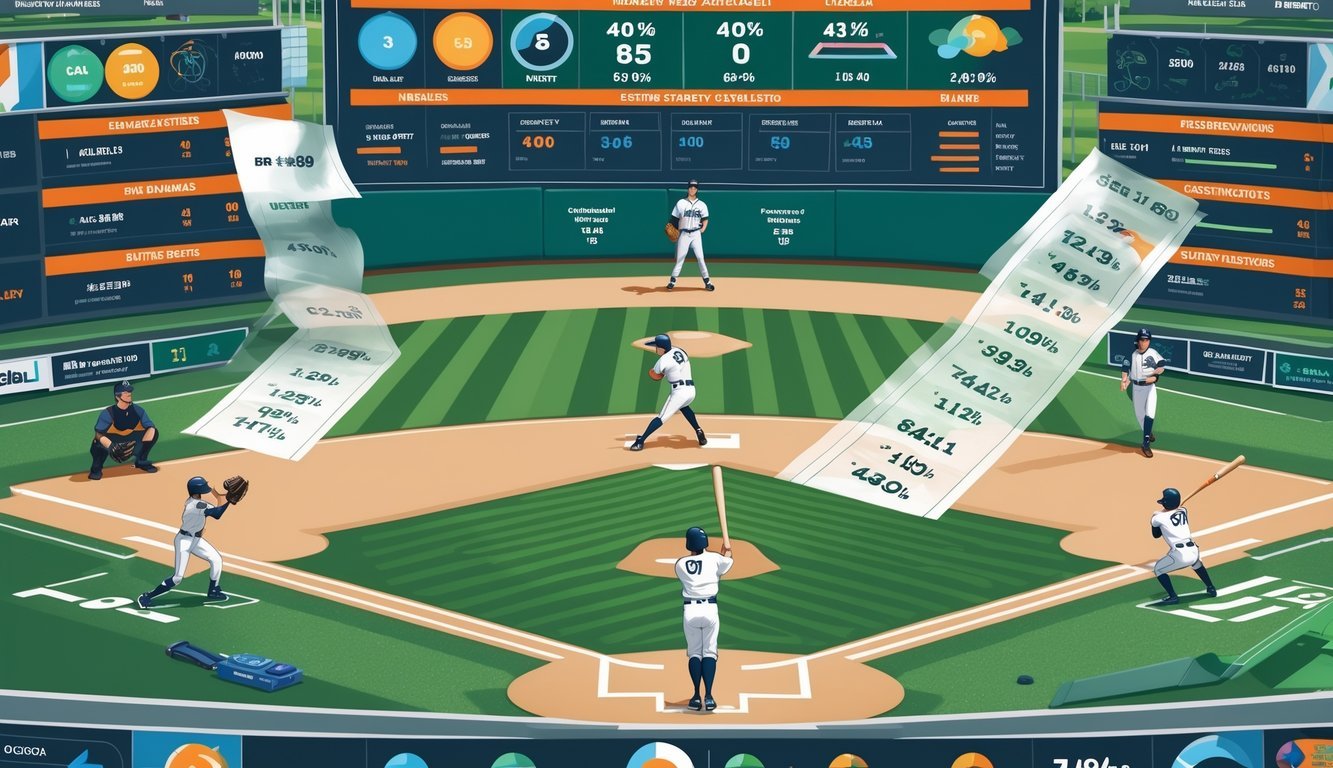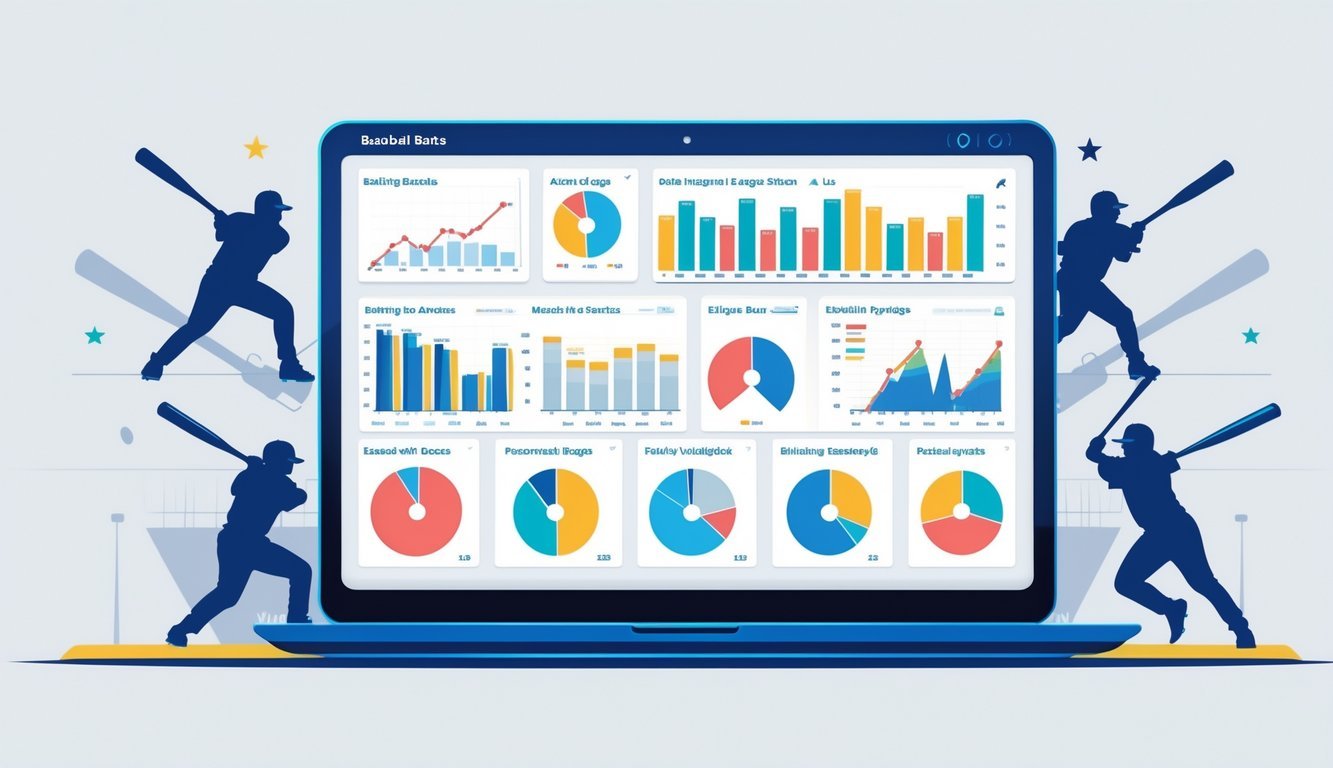PsychNewsDaily Publishers
100 Summit Drive
Burlington, MA, 01803
Telephone: (320) 349-2484
PsychNewsDaily Publishers
100 Summit Drive
Burlington, MA, 01803
Telephone: (320) 349-2484
Baseball statistics provide insights into player performance, including hitting, pitching, and fielding metrics, enhancing the viewing experience and strategic understanding of the game.

Baseball’s packed with numbers, and honestly, once you start understanding them, the sport opens up in ways you might not expect. Comprehensive baseball stats give you a full picture of how a player performs—hitting, pitching, fielding, and even running.
These numbers tell the story behind each game. Fans, coaches, and analysts use them to make smarter calls, whether it’s picking a lineup or just arguing with friends about who’s the real MVP.
If you’re tracking home runs, batting averages, or some of those trickier stats like OPS and WAR, knowing both the basics and the advanced stuff makes watching baseball way more interesting.
Stats show you not just who’s performing well, but also reveal trends and strengths that sometimes slip past you during a fast-paced game.
Once you get comfortable with these numbers, you’ll watch games with sharper insight. You might even find yourself talking about baseball in a whole new way with your friends.
Understanding baseball stats really changes how you experience the sport. Suddenly, every play feels like it matters a bit more.

When you follow baseball closely, knowing the key stats helps you spot how players and teams are really doing. The main numbers and categories make it easier to track progress and actually compare players.
Baseball stats mix basic counts and more advanced rates. Both matter a lot in major league baseball.
Some stats are the foundation for figuring out a player’s skill. For hitters, batting average (BA) shows how often a player gets a hit. Just divide hits by at-bats.
Home runs (HR)? That’s simply how many times a player knocks the ball out of the park.
For pitchers, earned run average (ERA) measures runs given up per nine innings. It shows how well a pitcher keeps things under control.
Strikeouts (K) count how many batters a pitcher retires without letting them put the ball in play. These numbers help you judge performance at a glance.
Baseball stats usually fall into hitting, pitching, or fielding.
Hitting stats include hits, runs batted in (RBI), and on-base percentage (OBP). OBP tells you how often a hitter gets on base, including walks and hits.
Pitching stats cover wins, saves, walks, and strikeouts. Advanced ones like FIP (Fielding Independent Pitching) focus on what pitchers can actually control.
Fielding stats track errors and assists to measure defense. Each category tells you something different about a player’s role.
Baseball stats break down into three main types: counting stats, rate stats, and advanced metrics.
Counting stats are totals—think home runs or strikeouts.
Rate stats show efficiency, like batting average or ERA. They let you compare players even when they play different amounts.
Advanced metrics use formulas to measure value more precisely. For example, OPS (On-base Plus Slugging) combines OBP and slugging to show total hitting power.
Stats like wOBA weigh different hits by how much they actually matter for scoring runs. Understanding these types helps you see what matters in the numbers.

If you want to really get baseball, you have to look past just hits and home runs. Advanced stats and comparisons dig deeper, showing how players and teams perform in all sorts of ways.
These numbers shift over time and across leagues, too. That’s part of what makes baseball so fascinating.
When you check a player page or a box score, you usually see stats like average (AVG), home runs (HR), and runs batted in (RBI). But advanced metrics paint a much richer picture.
On-base percentage (OBP) tells you how often a player gets on base—not just from hits, but also walks and hit-by-pitches.
Slugging percentage (SLG) measures a hitter’s power by weighing extra-base hits. Put OBP and SLG together, and you get OPS (On-base plus slugging), which shows both how well a player reaches base and hits for power.
Other stats like wOBA (weighted On-Base Average) and strikeouts (SO) balance scoring and outs made. Pitchers have stats like ERA (earned run average) and wins to judge their effectiveness.
Players like Aaron Judge and Shohei Ohtani really show off these advanced numbers. You can find deep stats on sites like Stathead Baseball or Baseball Almanac to compare stars and up-and-comers.
When you’re looking at all the teams, it’s not just about wins. You want to know how teams stack up on offense, defense, and pitching.
Team stats like aggregate OPS or team ERA hint at where a team shines or struggles.
Standings show wins and losses, but if you dig into team strikeouts, runs scored, and home runs, you get a better sense of their style. For example, a team with lots of strikeouts but high HR totals probably leans into big swings.
Comparing the regular season to playoffs? Things change. Playoff odds and scores shift strategies in lineups and pitching rotations.
Sites like Statmaster and Stathead let you track these trends over seasons. You’ll spot which teams are built to last.
Baseball’s always changing. You get a better sense of the game by spotting trends in stats from the past to the present—even down to minor league numbers.
Strikeout rates have gone up, and batting averages (AVG) have often dropped. Home runs (HR) move up and down too, depending on the ball, the stadiums, and even how players train.
Team strategies change, and you see that in league-wide ERA or runs scored.
Looking at Hall of Fame players or comparing current stars like Marcell Ozuna or Brent Rooker to legends from the past really puts things in perspective. Baseball Almanac and Stathead help you see how the numbers evolved, so you can appreciate players and teams in the right context.

Here you’ll find answers about important pitcher stats, common abbreviations, and where to get the latest MLB data. You’ll also see how to compare players across eras and which numbers highlight the best hitters.
You can even check out which websites dive deep into baseball stat analysis.
Check ERA (earned run average), WHIP (walks plus hits per inning pitched), and strikeouts. Wins and losses matter, but they don’t always tell the full story.
Consider innings pitched and saves for relief pitchers too.
You’ll see AVG (batting average), HR (home runs), RBI (runs batted in), OBP (on-base percentage), and SLG (slugging percentage).
For pitchers, SO (strikeouts), BB (walks), and W-L (win-loss record) are important.
MLB.com updates stats in real time. Baseball-reference.com is great for deep dives.
Most sports news sites and apps also give you current team and player info as games happen.
Sites like Baseball-Reference let you see stats from different eras side by side. Adjust for things like season length and rule changes to make comparisons fair.
Batting average, on-base percentage, and slugging percentage are the basics. More advanced stats like OPS (on-base plus slugging) and WAR (wins above replacement) show overall value.
Baseball-Reference dives into historical data and advanced stats. You’ll find a ton of numbers there if you like digging deep.
Fangraphs is another solid choice for detailed analysis and player metrics. Honestly, both sites let you study baseball stats up close—maybe even more than you’d expect.